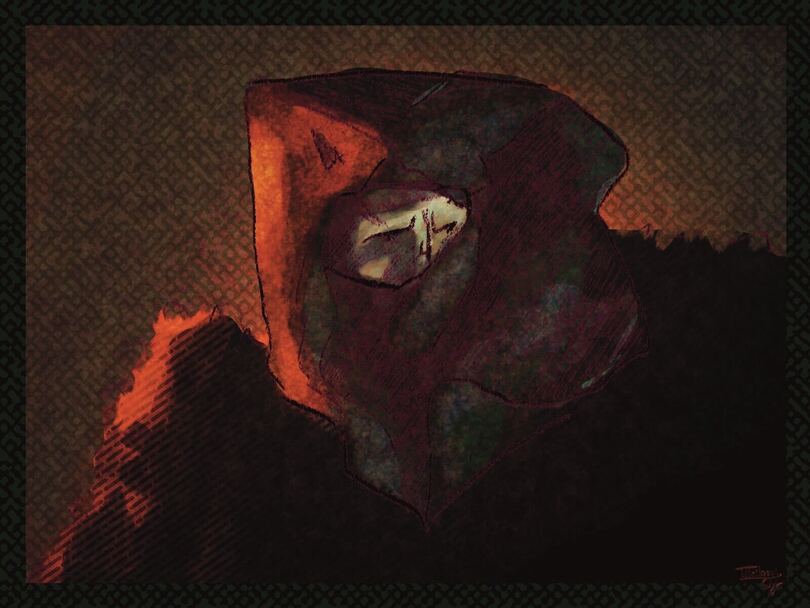‘Frankenstein’ solidifies Guillermo del Toro atop monster movie genre

The meticulous color palette of “Frankenstein” creates strong symbolism for characters. The monster is pictured in dark colors, representing his lack of identity. Sarah Yudichak | Contributing Illustrator
Get the latest Syracuse news delivered right to your inbox.
Subscribe to our newsletter here.
Guillermo del Toro has built his legacy as a director through beautifully complicated films such as “Pan’s Labyrinth,” and “The Shape of Water.” Both films take the classic monster tale, and flipping the script, humanize the beasts to make unrelatable characters relatable.
Guillermo del Toro’s “Frankenstein,” a 2025 adaptation of the classic Mary Shelley novel, proves that the Oscar-winning director is still king of the monster movie. While del Toro’s direction shines in this film, some issues prevent it from being one of the year’s best.
After his mother’s death, scientist Victor Frankenstein (Oscar Isaac) makes it his life’s mission to solve the mystery of death and recreate human life using physical anatomy from dead people. His mission is financed by Herr Harlander (Christoph Waltz), who’s the uncle of his brother William’s (Felix Kammerer) fiancée, Elizabeth (Mia Goth).
Victor uses the resources Herr Harlander provides to accomplish his lifelong mission and create The Creature (Jacob Elordi). However, he realizes his ambition is far too dangerous and aims to destroy the monster he built.
This proves to be a fruitless endeavor, as The Creature is indestructible. While surviving on its own, The Creature develops a sense of self and makes its own goal to destroy Victor for creating such a hellish existence.
There are several things “Frankenstein” does incredibly well.
In areas like production and costume design, it’s certainly ahead of the pack and will no doubt be featured in those categories come Oscar season. These aspects of the film are so impressive that they jump out at the viewer and almost act as a tertiary character. They perfectly capture the time period.
The tone is also a key element, elevated by the color palette del Toro meticulously uses throughout. The film contrasts bright colors against more muted tones, effectively juxtaposing The Creature and Victor Frankenstein.
When showing the more lavish side of Victor’s life, a brighter color palette is used. These lighter colors are used to show Victor’s humanity, which Victor even comments on when showing The Creature the sun, stating that the sun is life.
However, the scenes featuring The Creature all use muted grey tones, showing that The Creature, despite being brought to life by his creator, isn’t truly living. He’s just a product of several other people, and thus doesn’t have his own soul or agency.
This is the case until the end of the film, when The Creature forgives Victor for his wrongdoings. While saying goodbye to his creator, The Creature is bathed in sunlight, showing that now he’s free of his master; free to live his own life and become his own individual. This symbolism is subtle but powerful, helping the theme of humanity shine through.
Jacob Elordi is sensational in his role as Frankenstein’s monster, truly giving a career-best performance. Elordi was able to humanize a character viewed as brutish and emotionless in most adaptations. He shows the pain of The Creature beautifully and completely gets lost in the character. Come award season, he should definitely get some love. For the entirety of the film, he embodied The Creature, never once the actor playing him.
Del Toro’s direction and Elordi’s sensational performance bolsters the film, but there are some issues that can’t be ignored, the biggest of which is Isaac’s performance.
Isaac overacts so horrendously in this movie that his scenes almost become unwatchable, which is concerning, considering he’s playing the main character, Victor Frankenstein.
Yes, Isaac is playing a mad scientist, and that requires a bit of eccentricity. But such a performance still requires restraint and nuance. His accent is so bad and just doesn’t sound natural for him. Victor Frankenstein is supposed to be such a layered character, and the perfect foil to The Creature, but with Isaac’s portrayal, he just feels like an abusive owner rather than a deeply troubled scientist.
Another gripe I have with the film is the pacing of the first 90 minutes of the movie. Again, this might be a result of Isaac’s abhorrent performance, but this first part really felt like a slog to get through, and the exposition seemed to drag on forever.
The nonlinear structure of the film was interesting, but to take so long to get through Victor’s story and spend so much time on elements like his affection for Elizabeth just felt unnecessary, especially considering the actual process of developing The Creature felt so rushed.
Despite these flaws, “Frankenstein” was still a very good film that was captivating for the majority of its runtime. While the two and a half hours are long and at times difficult to get through, the film’s strengths make this watch worthwhile. A film like this would appeal to anyone who enjoys monster movies and period pieces, but also to anyone who has patience when it comes to longer, slowly paced movies.





